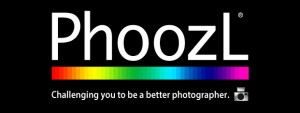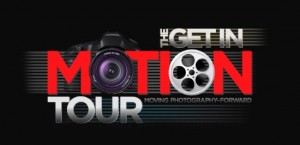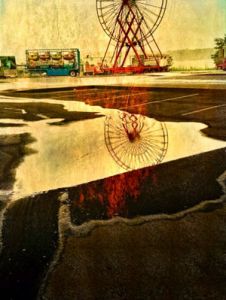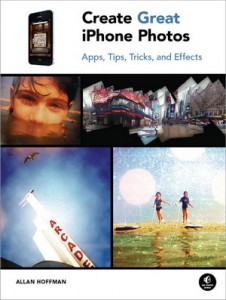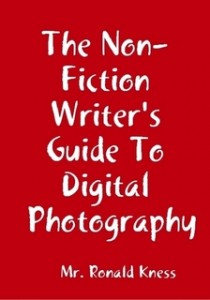At photography conferences and trade shows, you will find learning and networking experiences that are difficult to replicate through books, videos, or webinars. Attending a national photography conference can be a fantastic way to get a summary of current thinking, meet the brightest stars in the business, see demonstrations of the latest technology, and get hints about what’s next.
With the soaring popularity of photography (and the fact that so many creative pros must add photography to their repertoire of skills), many photography conferences welcome newcomers. Whether you want to make photography your full-time career or just want to learn how to shoot and process better photos, most photography conferences offer classes that can help.
Here’s a quick overview of three upcoming conferences and how they differ.
Photoshop World Conference and Expo
September 4-6, 2013
Mandalay Bay Resort and Casino
Las Vegas, Nevada
(Early registration discount ends August 2)
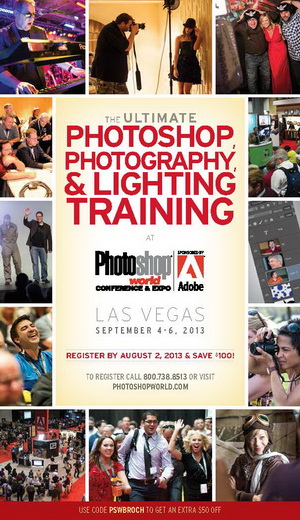 This Adobe-sponsored event is being promoted for “creative people from all walks of life—from beginners to seasoned pros, from teachers to students, and from amateurs to wizards.” In more than 100 different training sessions, Photoshop, photography, creative business, and design experts will share techniques in seven different areas: Photoshop Skills, Photoshop for Photographers, Lightroom, Photography Techniques, Graphic Design, Lighting, and Business.
This Adobe-sponsored event is being promoted for “creative people from all walks of life—from beginners to seasoned pros, from teachers to students, and from amateurs to wizards.” In more than 100 different training sessions, Photoshop, photography, creative business, and design experts will share techniques in seven different areas: Photoshop Skills, Photoshop for Photographers, Lightroom, Photography Techniques, Graphic Design, Lighting, and Business.
The in-depth, pre-conference sessions include workshops such as Photoshop for Beginners, Lightroom 5 Crash Course, and Light It: Starting from Scratch. You can also experience learning events such as an On Location Wedding Photography Shoot, a Photo Safari in Las Vegas, and Top Gun Flight Training for aerial photography.
The lighting and photography technique tracks can help you shoot more visually interesting images from the start. You can learn how to:
- Create texture, dimension, and mood with light
- How to light anyone, whether in the studio or on location
- Take your technique to the next level and become a better photographer
- Style breathtaking images without spending a lot of money
Business workshops cover topics such as social media, pricing, negotiating, selling, contracts, licensing, and releases as well as the business side of wedding photography, and how to make it in editorial photography or sports photography.
The Photoshop Skills track covers topics such as video editing with Creative Cloud, digital illustration workflow, and smart creative technology. The Graphic Design track includes workshops on creating motion graphics, using InDesign, illustration in Photoshop, and the fundamentals of character design for animation.
The Photoshop World Expo features live photo shoots, product demonstrations, and bonus classes.
Photoshop World Conference and Expo is organized by the National Association of Photoshop Professionals (NAPP). When you register for the Conference as a non-member, you will get a one-year membership to NAPP, which includes ten issues of Photoshop User magazine, and access to online classes and tutorials, discounts, and Photoshop and Lightroom help desks.
LINKS
National Association of Photoshop Professionals
PDN PhotoPlus International Conference + Expo
Conference: October 23-26, 2013
Expo: October 24-26, 2013
Javits Convention Center
New York, NY
(Discounted online registration ends October 22)
 Attended by more than 23,000 professional photographers and enthusiasts, this is the largest photography and imaging show in North America. Celebrating its 30th year, PhotoPlus will bring the latest technologies, applications, and business strategies to the forefront while taking a nostalgic look at the world of photography. The show’s theme is “Honoring the Past, Envisioning the Future.”
Attended by more than 23,000 professional photographers and enthusiasts, this is the largest photography and imaging show in North America. Celebrating its 30th year, PhotoPlus will bring the latest technologies, applications, and business strategies to the forefront while taking a nostalgic look at the world of photography. The show’s theme is “Honoring the Past, Envisioning the Future.”
The 90+ conference seminars are organized into eight tracks: Mastering Light; Shooting Memorable Moments; Creating for Clients; Social Media and Marketing; Better Business; Tips and Trends; In Motion; Post Production; Step by Step; and WPPI U.
WPPI U is a full-day series of seminars on October 23 produced by Wedding and Portrait Photographers International. Topics include posing, venue lighting, and creative composition tips for wedding photography, secrets to success in boudoir photography, and a start-to-finish overview of a portrait shoot.
Panel discussions at PhotoPlus Expo will explore the state of editorial photography, safe social media practices, strategies for entering photography competitions, presenting your work to multiple markets, and how motion is changing the future of still photography.
Other sessions will cover fine-art digital printing and publishing, earning a living in a world in which everyone has a camera, evolving your craft from stills to motion, succeeding in stock photography, and today’s changing market for photographs.
At the Expo, you will be able to meet representatives of nearly 300 manufacturers and service providers and touch, test, and compare an extensive assortment of photographic hardware, software, and services. Admission to the Expo is $70 on-site, but is free if you register online by October 22.
The official portfolio review program enables commercial and fine-art photographers to get feedback and critiques from top professionals along with the possibility of new assignments and relationships.
A variety of registration options are available. Register in advance for single sessions, one-day conference passes, or the full conference, which includes the PhotoPlus 30th anniversary bash and a new product preview and networking event. Student discounts and VIP Expo passes are also available.
PhotoPlus International Conference + Expo is brought to you by Photo District News (PDN), the award-winning monthly magazine for professional photographers. Photo District News and PhotoPlus International Conference + Expo are part of the Nielsen Photo Group.
LINKS
PDN PhotoPlus International Conference + Expo
Portfolio Review Sessions at PDN PhotoPlus Conference
Imaging USA
Professional Photographers of America
January 12-14, 2014
Phoenix Convention Center
Phoenix, Arizona
(Registration discounts end December 4)
 With more than 25,000 members in 54 countries, Professional Photographers of America (PPA) describes itself as the largest international non-profit association created by professional photographers for professional photographers.
With more than 25,000 members in 54 countries, Professional Photographers of America (PPA) describes itself as the largest international non-profit association created by professional photographers for professional photographers.
PPA recently opened registration for Imaging USA 2014 and expects to attract more than 10,000 industry professionals for three days of photography education and inspiration.
The Imaging Expo trade show will feature more than 600 booths, several all-inclusive parties and more than 100 speeches, presentations and hands-on demonstrations by photographers and well-known industry experts. The educational classes can help you improve your photography business skills, range of photographic services, and expert use of technologies. Imaging USA also features mentoring opportunities, portfolio reviews, and an exhibition of award-winning photography.
Imaging USA is the longest running international photographic convention, expo and image exhibition in the world. Nearly as old as photography itself, the event dates back to 1880 when it began as the annual convention and trade show for Professional Photographers of America (PPA). It continues to grow and evolve along with industry trends and technology.
PPA is offering a free full-registration to Imaging USA as a perk for new members. Professional Active PPA memberships are available for $27.92 a month. Current members and everyone else can register for the full conference and expo, the expo only, the full conference and pre-conference courses, the International Photographic Competition, or off-site classes throughout the surrounding areas.
LINKS
Professional Photographers of America


